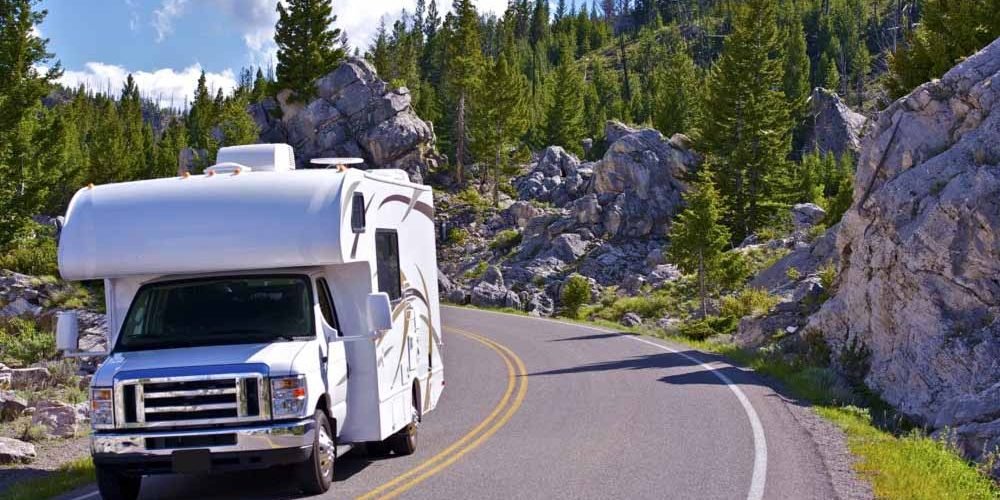It’s understandable if you read the title of this article and thought it was supposed to be an oxymoron, but that’s not the case at all. Camping in an RV saves more trees than the conventional ways we live in our homes.
Considering the amount of gas needed to move a recreational vehicle, this may be hard to wrap your head around, but I’ll lay out the facts and let you draw your own conclusions.
To begin, fuel is the most nonrenewable resource a recreational vehicle consumes. While it’s true that many large recreational vehicles get no more than ten miles to the gallon, many pickup trucks towing trailers can achieve twenty miles per gallon.
Take into account the car you’re sitting in right now. You drive it to and from work every day, as well as for errands, fun, and travel, and its fuel economy is somewhere in the low to mid-twenties range. If you compare the fuel costs of this vehicle with, say, a recreational vehicle that spends most of its time in a parking lot, you’ll start to get the picture. The majority of full-time RVers don’t make frequent cross-country moves. Typically, in the direction of the sun. When it comes to RVing, many people only take one or two truly epic trips, typically to far-flung places like Alaska or Mexico. However, the annual mileage that an RVer will rack up is typically less than ten thousand miles. A few hundred gallons of fuel is what this amounts to. Think about how much gas your current car consumes. A small commute of fifty miles per day in a vehicle that gets twenty-five miles to the gallon will use 400 gallons per year, and that’s not counting any other trips taken.
The next step in realizing that RVing is more environmentally friendly is to compare the resources required to power a conventional home with those required to power a recreational vehicle.
The majority of recently built houses can accommodate up to 200 amps of electricity at 220 volts. That’s the same as 44 thousand watts of energy. That much energy would have to be supplied by a generator with 63 horsepower at full throttle. Although 100 amps is rarely needed, it is possible to reach that number if you run an electric water heater, dryer, and stove all at once. It takes a lot of energy to heat and cool a large house for an entire year.
Typically, an RV will have wiring for 30 or 50 amps at 110 volts. Exactly 5,500 watts is the maximum allowed here. That’s more than enough juice to power an RV and everything in it. The energy needed for heating and cooling can be greatly reduced if RV owners simply move north in the summer and south in the winter.
The recreational vehicle is supreme when used on the water. Our motorhome is equipped with a 90-gallon water tank. With careful use, my wife and I can get by on this for up to a week, and that includes taking showers. I don’t think our daily water consumption would go above twenty or thirty gallons, even if we were hooked up in an RV park. There is no way I could guess how much water an average home uses, but if the toilet is flushed ten times a day, that’s fifty gallons. Rumors have it that the average North American household uses 400 gallons of water per day.
Propane is the only other nonrenewable resource utilised by a recreational vehicle. Our recreational vehicle has a 30 pound propane tank on the outside. Six to eight times a year, for less than 250 pounds, I have this refilled. When it comes to the amount of propane used, a backyard barbecue enthusiast could easily outdo me.
It’s also worth noting that the costs associated with maintaining a permanent residence, such as detergent, paint, and other household chemicals, would be significantly higher than they would be for a mobile home.
Materials for a home and yard would be lower on the list than those needed to construct a recreational vehicle. In this respect, I am completely clueless. When you consider how much power, raw materials, and nonrenewable resources you can save by living the RV lifestyle full time, you’ll quickly come to the conclusion that it’s the more environmentally friendly option.
Consequently, if reducing your ecological footprint is high on your list of priorities, you might want to think about making the transition to full-time RV living. It’s a fantastic way of life with a wonderful brotherhood of people. You could be helping both yourself and the planet.
Full Time in an RV is Will Imanse’s authored work. He’s been a nomadic for over a decade. He was frequently questioned about his nomadic way of living. In an effort to avoid fielding the same inquiries over and over, he looked for a book he could suggest to would-be Full-Time RVers.
After realizing that no one book existed to address all of the inquiries he was receiving, he set out to compile the knowledge he and other Full-Time RVers had accumulated into a book of their own.
Mike and Terry Church, of “Mexican Camping” fame, are among the many people who have praised the finished product.





